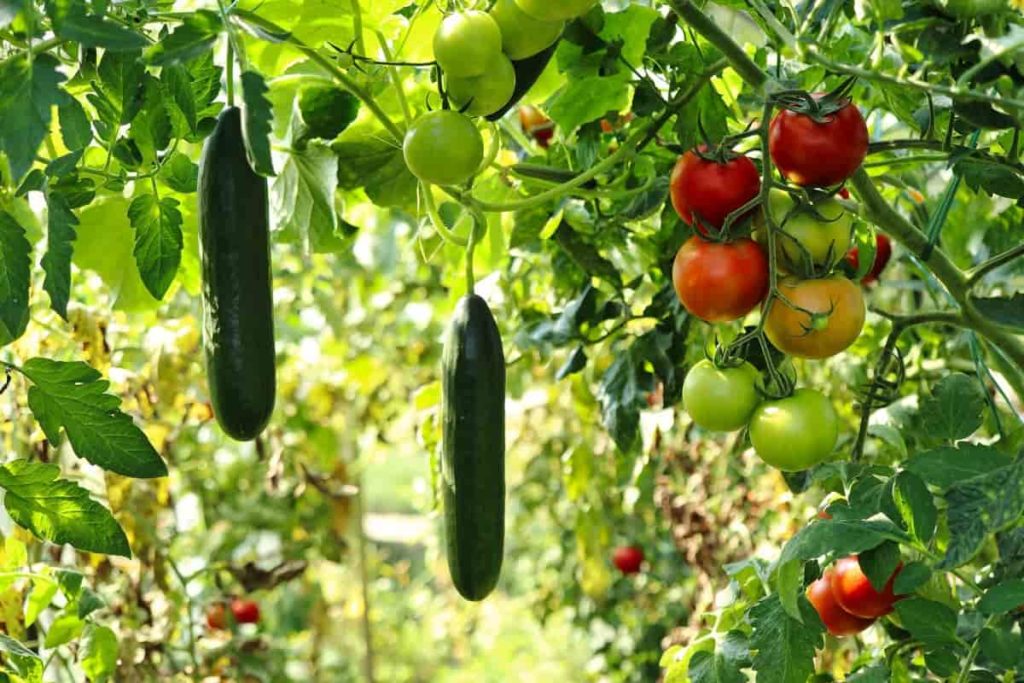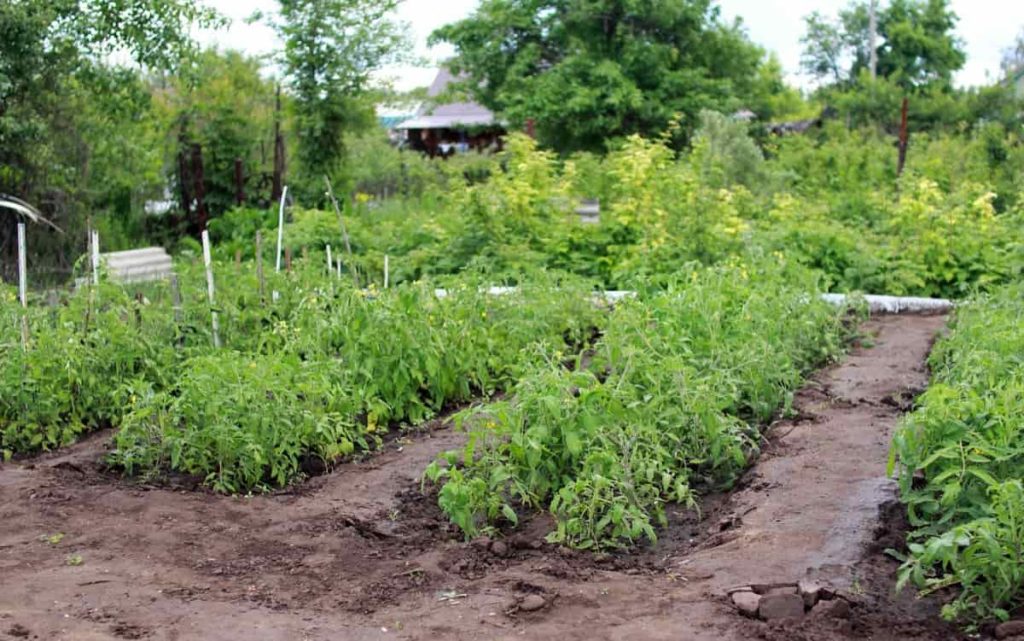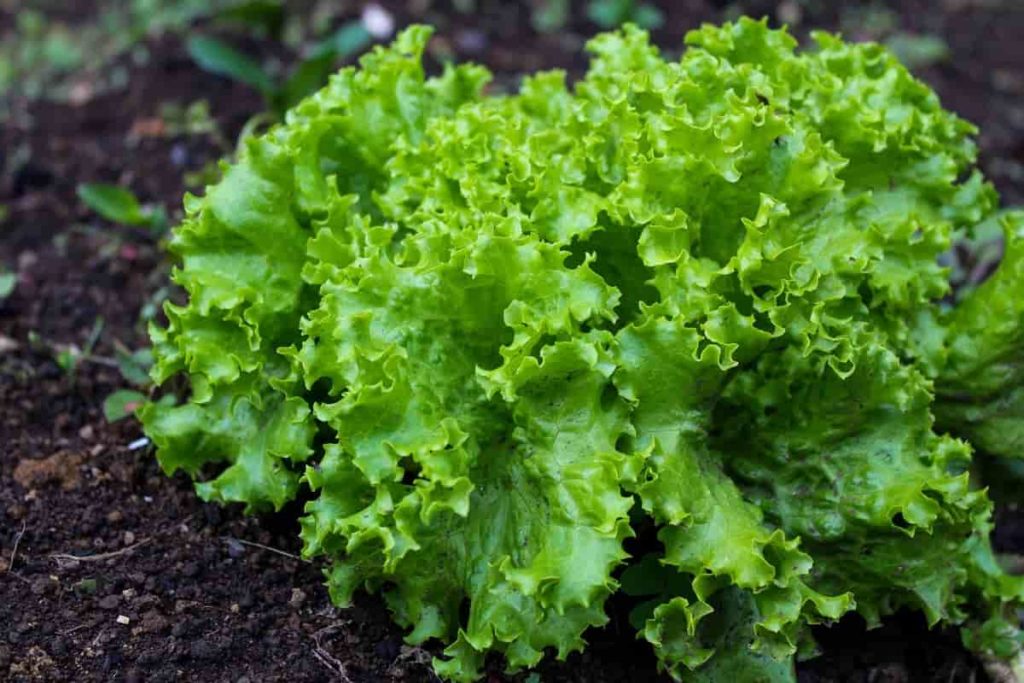Organic backyard vegetable gardening: Organic vegetable gardening refers to growing and planting vegetables without using chemicals. Plants will instead depend on their natural growth mechanisms. Plants will taste more natural and flavorful as a result. Furthermore, they will give your body complete nutrition.
Guide on organic backyard vegetable gardening, soil preparation, cover crops, mulch for vegetable gardens, how to start, best vegetables

Growing organic vegetables in your backyard
Are you able to grow organic vegetables? Not likely. Even if vegetables lack the organic label, they can be produced in an organic environment. However, the food that bears the organic label must adhere to the organic farming method. The process involves soil testing, certification, and compliance assessment, which would not be appropriate or necessary for a home vegetable garden.
The soil can, of course, be tested to see if it contains any chemicals. However, if you know what’s been used on the soil in recent years, you shouldn’t worry about it. The process, not the paper certification, is essential to most of us who want to start an organic vegetable garden. Before starting your backyard organic vegetable garden, you need to prepare the soil.
Organic vegetable garden soil preparation in the backyard
Rich, healthy soil is the foundation for a successful organic garden. If you want to have an organic backyard garden, here are a few ways to improve your garden soil: Both soil structure and nutrients will be provided by horse manure. Make sure that the horses whose waste is produced are fed organically.
It might not be so easy unless you were collecting from grazed-fed animals. It’s still imperative to ensure the grass hasn’t been treated with pesticides or insecticides. Organic beef, lamb, and milk producers could also provide organic manure. However, they are unlikely to donate their animal waste since they need it to fertilize their pastures organically.
Additionally, leaf mold is a good option, but it has nutrient limitations. An all-purpose organic fertilizer would help to complement leaf mold. Garden compost is ideal, but you can use organically composted material only if you grow organically. Otherwise, your organic garden would be contaminated by any non-organic materials used in the compost.
Cover crops for organic vegetable gardening in the backyard
Planting organic cover crops is another way to build your organic garden soil. Winter rye, winter clover, buckwheat, and hairy vetch are the most common. You can prevent soil erosion and prevent weed seeds from taking root in it by planting one or more of these in the fall. In addition to fixing nitrogen, a cover crop will also loosen the soil, making it more fertile for next year’s garden. Comfrey also helps improve soil because it draws nutrients from intense soil.
In case if you miss this: Growing White Sapote – Tips, Ideas, and Secrets

In addition to its potassium-rich leaves, comfrey can be made into a tea or rot down to a black liquid, diluting with water. Water this liquid twice weekly when flowers appear on any flowering or fruiting vegetable plant. The leaves of nettles are also great plants to grow vegetables such as spinach, salads, and cabbage since nettle tea is rich in nitrogen. It’s one of our favorite recipes.
Mulch for vegetable gardens in the backyard
It would help with mulch to prevent weeds and keep the soil moist. In addition, it would help if you used only organic mulches in an organic garden, including leaves, grass clippings, sawdust and wood chips, and hay. If you mulch properly, you will save yourself many hours of backbreaking weeding.
Organic vegetable gardening seeds for the backyard
If you want to grow vegetables organically, seeds are essential. You will be all set to learn how to save seeds from your crops. Start with organic vegetable seeds if you’re just getting started. Now that you understand how to start a backyard organic vegetable garden, you should start your own. You will then be able to provide healthy food for your family.
How to start a backyard organic vegetable garden
Site selection
It is recommended that the location receives between six and eight hours of sunlight per day. Fruiting plants like tomatoes, peppers, cucumbers, and melons require full sun to thrive. However, if your garden has a bit of shade, don’t despair. Lettuce, kale, and many herbs can tolerate partial sun (think about 3 hours per day or more). Keeping your vegetables away from large trees and roots (which could drain their nutrients) is a good idea. Nearby water sources are also recommended.
In case if you miss this: Top 10 Herbs to Grow in Hydroponics

Don’t worry, even if you aren’t blessed with a large yard. Container gardening can help. Place potted plants in protected areas to prevent them from being blown over by strong winds. Place your organic container garden somewhere convenient to the kitchen as well. A herb garden near your kitchen door, for example, can make it easy to prepare dinner. If you’re planting in an organic garden, be sure to use the right size pot.
Utilize good soil
For an organic garden to succeed, the soil must be rich in nutrients. Root systems thrive in soil that drains well. If you’re new to organic gardening, start a compost pile now. It will help enrich the soil, but remember that compost takes time to decompose. To give your plants a great start, mix 3 inches of aged compost into the top 6 inches of existing garden soil. Use potting mix designed for containers if you are growing a container garden.
Plant roots can reach water and nutrients more quickly because lighter and drains better than garden soil. The compost also contains lots of organic matter in the form of aged compost. Don’t forget to put holes in your pots for drainage since few vegetables or herbs enjoy being wet. Fill a raised bed half full of In-Ground Soil and half full of Container Mix for the best results.
Choosing the right plants
If you are new to organic gardening, it is imperative to pick plants native to your region or bred specifically for your climate. Several Bonnie Organics varieties grow well in your area, so you’ll find them at your nearest garden center or home improvement store. In colder northern climates, you may see short-season tomatoes, while in warmer southern climates, you may see tomatoes that can withstand high temperature and humidity. In addition, don’t dismiss disease-resistant hybrid plants, as they can also lead to less work and better harvests. Plus, plant various flowers and flowering herbs to attract beneficial insects and keep pests away.
Water wisely
You should always check the soil before watering your plants since too much water can do just as much damage as not enough. Press your finger into the soil about one inch deep. Keep watering if the soil is moist, but if it is dry, leave it alone. Ensure that the roots of the plants are adequately moistened by watering the soil surrounding their base. It is wasteful to water the leaves, but it is also possible to create a disease-prone environment. Therefore, it is ideal for organic gardens to use drip irrigation, a highly targeted watering method.
Plant food
Throughout the growing season, give your plants a boost of energy by using Edibles Plant Nutrition. To produce bountiful harvests, such as huge, hungry plants like tomatoes and peppers, need extra nutrients. Be sure to read the directions on the package to add the right amount of plant food.
Mulch is used to maintain
In addition to blocking the sun, organic mulch helps retain moisture in the soil, which may prevent you from watering. It also makes your garden look tidy and pretty. Mulch choices include pine and wheat straw, but untreated grass clippings, chopped leaves, and aged wood shavings are often used. Muck eventually breaks down and adds nutrients, which is excellent for plants.
Best vegetables for organic backyard vegetable gardening
Peas
Spring is the time to plant peas, and with a short harvesting period of 50-60 days, they are the first to harvest. Raised beds and large planters are suitable for peas since they need well-drained soil. A medium-height trellis (3 – 4 ft) is also usually required; however, some varieties will grow much higher, so check your seed package before planting.
It is common to sow pea seeds directly into the ground, sown thickly. You can, however, sprout them indoors, ensuring success in moist conditions. Sprout seeds in water dissolved with vitamin C. Set the seeds to sprout and cover with a cloth to keep moist. It will increase the size of the plants.) Plant every two weeks to extend the harvest. Peas also improve the soil by fixing nitrogen.
Lettuce
A wide variety is available. Mulching is more accessible with large head-forming lettuces such as butterhead and iceberg—plant smaller leafy varieties in swaths of 24 inches wide for a ‘self-mulching’ effect. If possible, select diverse species. It is also possible to interpret small lettuce transplants throughout the garden. Bolling is a common problem with lettuce plants.
In case if you miss this: Time Saving Gardening Tips, Ideas, And Techniques

It occurs when the leaves stop growing as the plant goes to seed. Temperatures that are consistently too high cause bolting. If you want to prevent the lettuce from bolting, plant it in a shaded area or plant it next to a crop that will provide shade, such as tomatoes or peas. Heat-tolerant varieties are also available. Consult your local seed provider to determine what cultivars best suits your area.
Broccoli
Nutritional value and productivity make this plant a highly valued member of the Brassica family. Growing broccoli at home can help relieve the wallet since broccoli is so expensive. Broccoli can also be overwintered, producing new shoots with small clusters through the winter.
Directly sow brassicas into small pots or the ground. Using starter pots is a good idea because seedlings can be protected from birds and slugs and can be moved indoors in inclement weather until they are strong enough to transplant. It is recommended to rotate the beds for brassica crops each year. The best time to plant broccoli is at the beginning of spring or the end of summer, and mulch well to keep soil temperatures low.
Tomatoes
Cherries, table tomatoes, and paste tomatoes are found in many varieties. Plants need tall stakes to be set when transplanted. In some cases, wire cages or other staking methods are preferred. You will need to tie the plants to the stakes as they grow, which takes some time, no matter which option you choose. Keeping their leaves dry is best for tomatoes.
In case if you miss this: Cinnamon Tree Planting, Tips, Ideas, And Techniques

The sides of a simple shelter can be left open, and clear plastic sheeting can cover the plants. Mulch will prevent rain splashes from wetting the lower leaves and help retain moisture in the soil above. During the same period, the transplants grow in pots where some green grass clippings have been incorporated into the soil. The soil will warm up, and the young seedlings will be boosted when transplanted.
Peppers
It is possible to start pepper plants early in small pots and transplant them outside or in a greenhouse when the weather is warm enough. When peppers are left on transplants, plants will become stunted. Cut off any peppers that form on transplants. When the peppers reach maturity, pick them. You will encourage the development of new fruit and increase yields. Leaving one or two plants unpicked will result in sweetened and reddened peppers; however, those plants will yield fewer peppers.
In case if you miss this: Unique Indoor Hanging Plants, Gardening Guide

Benefits of growing your organic vegetables in the backyard
- Organic vegetables are available at a lower cost to your family. Transport and warehousing food harm the environment
- You’ll enjoy your meals more because they’re more personal, tasty, and interesting
- It helps your family understand the natural cycles of weather, growth, and renewal
- Provides a healthy outdoor activity that cultivates mindfulness
- Your children will experience wholesome activities and make lasting memories
Commonly asked questions about organic backyard vegetable gardening
1. What is the best way to prepare backyard organic vegetable soil?
- Add 3 to 4 inches of organic matter, such as manure or finished compost
- Leaves, wood chips, bark, hay, or straw can be mulched around your plants. Adding mulch will keep the soil moist and cool
- Add at least two inches of organic matter every year
- Plant cover crops and green manures
2. What are the steps to starting a backyard organic vegetable garden?
- Click on the site you want.
- Make use of excellent soil.
- Decide which plants to use.
- Conserve water.
- Don’t forget to feed your plants.
- Mulch the garden regularly.
- Rotate the crop.
- Remove all debris.
3. Is it possible to control backyard vegetable garden pests organically?
- Plants are protected from various pests with floating row covers
- Large outbreaks of soft-bodied insects need to be treated with insecticidal soap
- Spray Neem Oil to Prevent Pests from Getting Serious
4. How do I feed my organic vegetable garden?
Organic fertilizers, like tomato, vegetable fertilizers, or liquid organic fertilizers, like fish and kelp fertilizer, are available. For established plants, granular fertilizers are applied every two months at planting.
5. What are the best methods for growing organic vegetables in pots in the backyard?
Vegetables require quality potting soil. Add fertilizer to the mix as well. A consistent supply of water is essential for the growth of vegetables.
- Broccoli Seed Germination and Selection
- Asparagus Seed Germination and Variety Selection
- Seasonal Flower Gardening: Best Practices for Spring, Summer, Fall, and Winter
- How to Grow Hibiscus from Flower
- Plantation Ideas for Home Decoration: A Beginners Guide
- Flower Garden Designs and Layouts for Beginners
- Planting and Spacing Techniques in Papaya: A Beginner’s Guide
- Growing Gold: Essential Techniques for Planting Pineapples
- How to Make Kalanchoe Plant Bushy: Home Remedies and Solutions
- 11 Reasons Why Your Gardenia is Not Blooming: Home Remedies and Solutions
- Eco Elegance: The Guide to Designing a Drought-Tolerant Landscape
- Gardening on a Slope: Strategies for Hillside Landscaping
- Nourish and Flourish: Top Organic Mulches for Thriving House Plants
- Everything You Want to Know about Indian Mogra Flower: Discover Uses and Growing
- Green Thumb Success: Expert Tips for Cultivating Greenhouse Pumpkins All Year Round
- Maximize Growth & Flavor: The Ultimate Guide to Companion Planting in Herb Gardens
- How to Control Rhododendron Problems Naturally: Home Remedies and Organic Ways to Fix Them
- Natural Magic: The Remarkable Benefits of Cinnamon for Plants
- Best Steps to Revive Dying Tulip with Natural and Organic Treatment
- 10 Reasons Why Your Angel Trumpet is Not Blooming: Remedies and Treatment
- How to Fix Periwinkle Leaf and Flower-Related Problems: Natural Remedies and Solutions
- How to Fix Zinnias Leaf and Flower Problems: Discover Natural and Home Remedies
- Organic Steps to Induce Lemon Tree Flowers: A Comprehensive Guide
- Bloom Booster: Crafting the Perfect Homemade Bougainvillea Fertilizer
- Optimizing Growth: A Guide to Applying NPK Fertilizer for Potted Plants
- 10 Best Homemade Fertilizers for Rubber Plant: DIY Recipes and Application Method
- How to Boost Female Pumpkin Flowers: Effective Steps for More Flowers and High Yields
- Transform Your Indoor Garden: Top Benefits of Pink Salt for Houseplants
- 10 Best Homemade Fertilizers for Peacock Plants (Calathea): Easy DIY Guide
- Unlock Blooms: 9 Reasons Why Your Potted Chrysanthemum is Not Blooming
- 8 Reasons Why Your Potted Hibiscus is Not Blooming: Fix it with Simple Solutions
- Unlock Blooms: 9 Key Reasons Your Potted Frangipani Won’t Flower
- 10 Reasons Why Is My Ice Plant Not Blooming: Remedies and Treatment
- 10 Reasons Why My Potted Hydrangea Not Blooming: Treatment and Remedies
- 10 Reasons Why is My Wisteria Not Blooming: Remedies and Treatment
- 10 Reasons Why is My Goldfish Plant Not Blooming: Remedies and Treatment